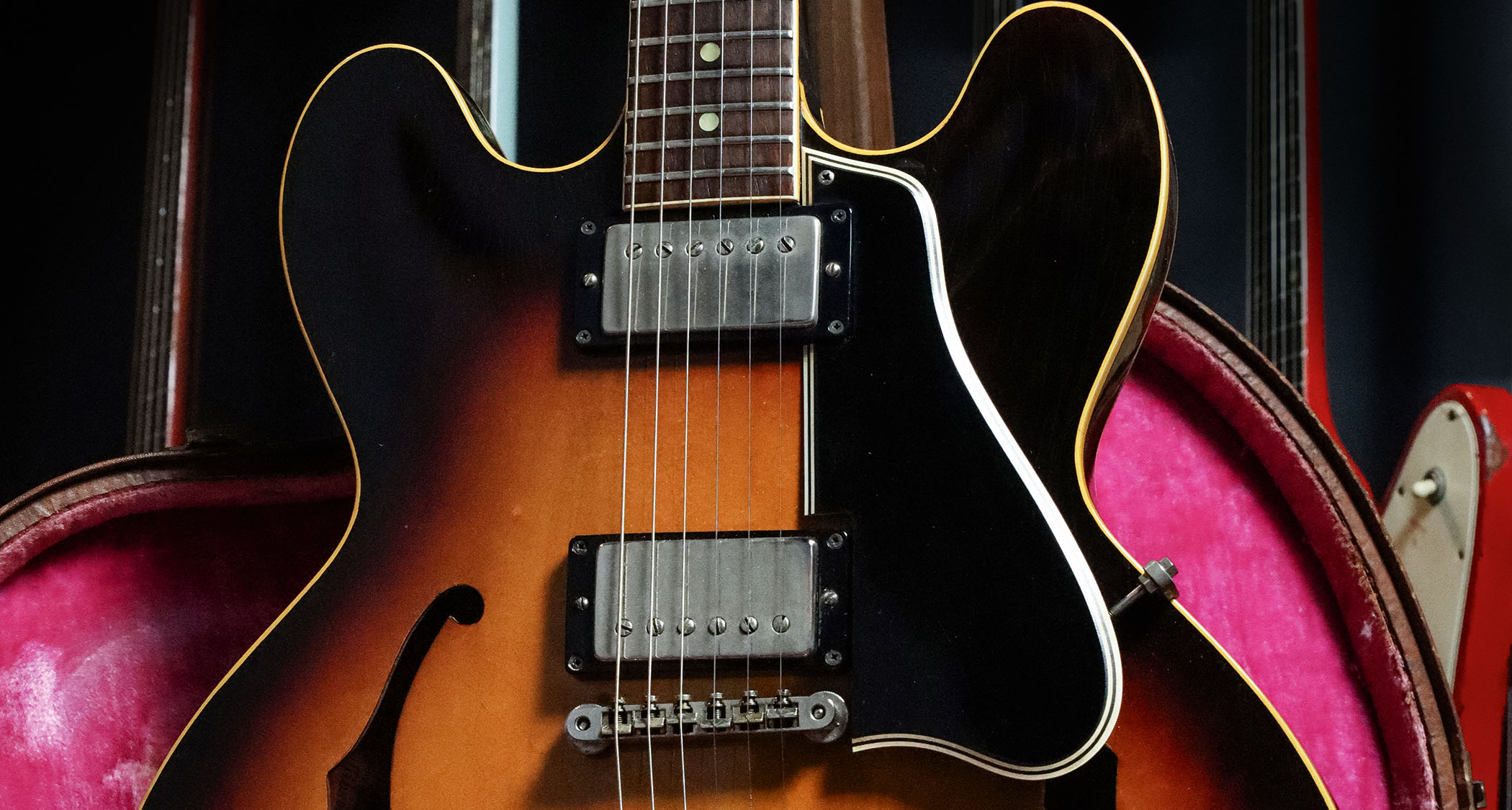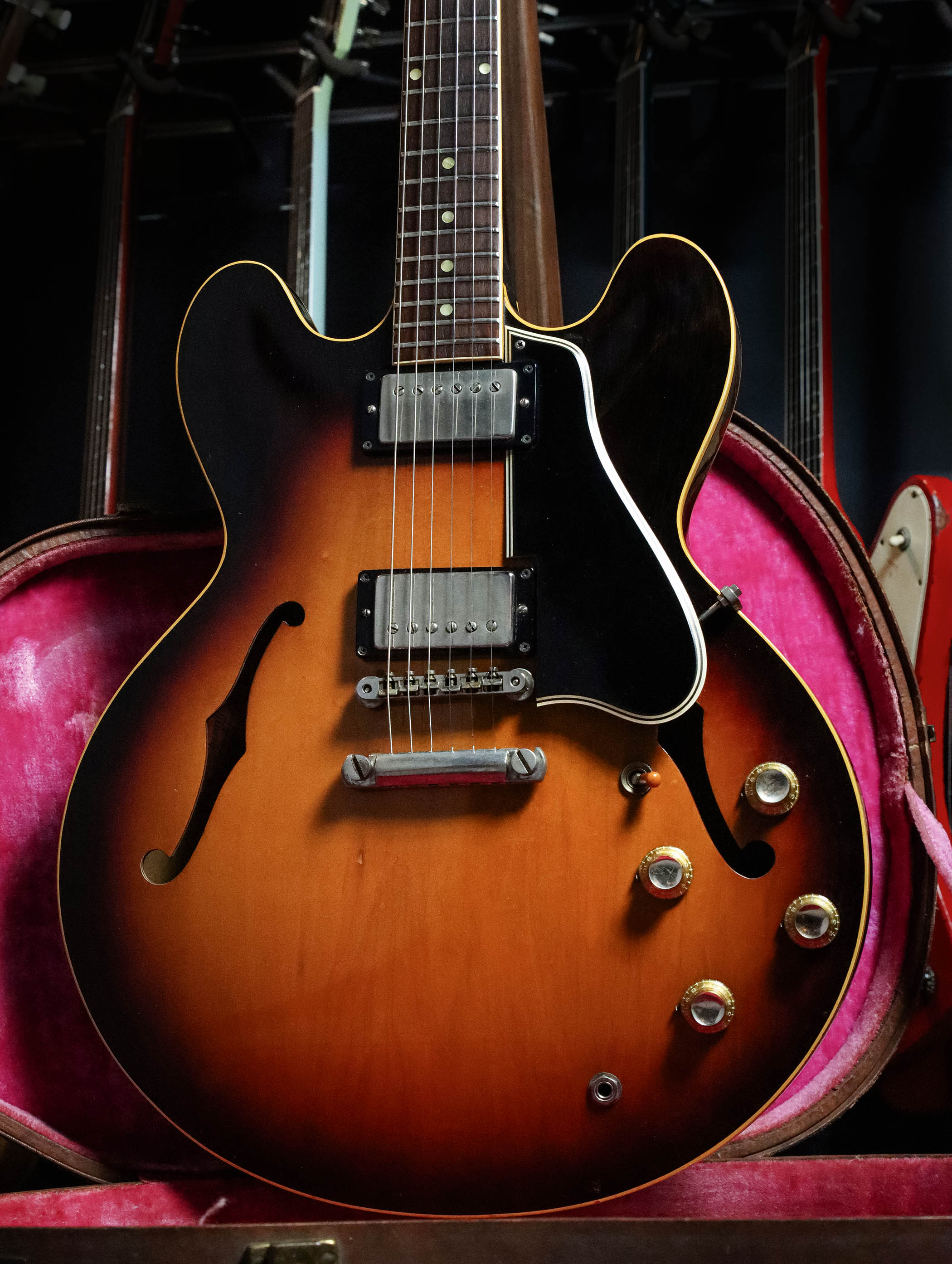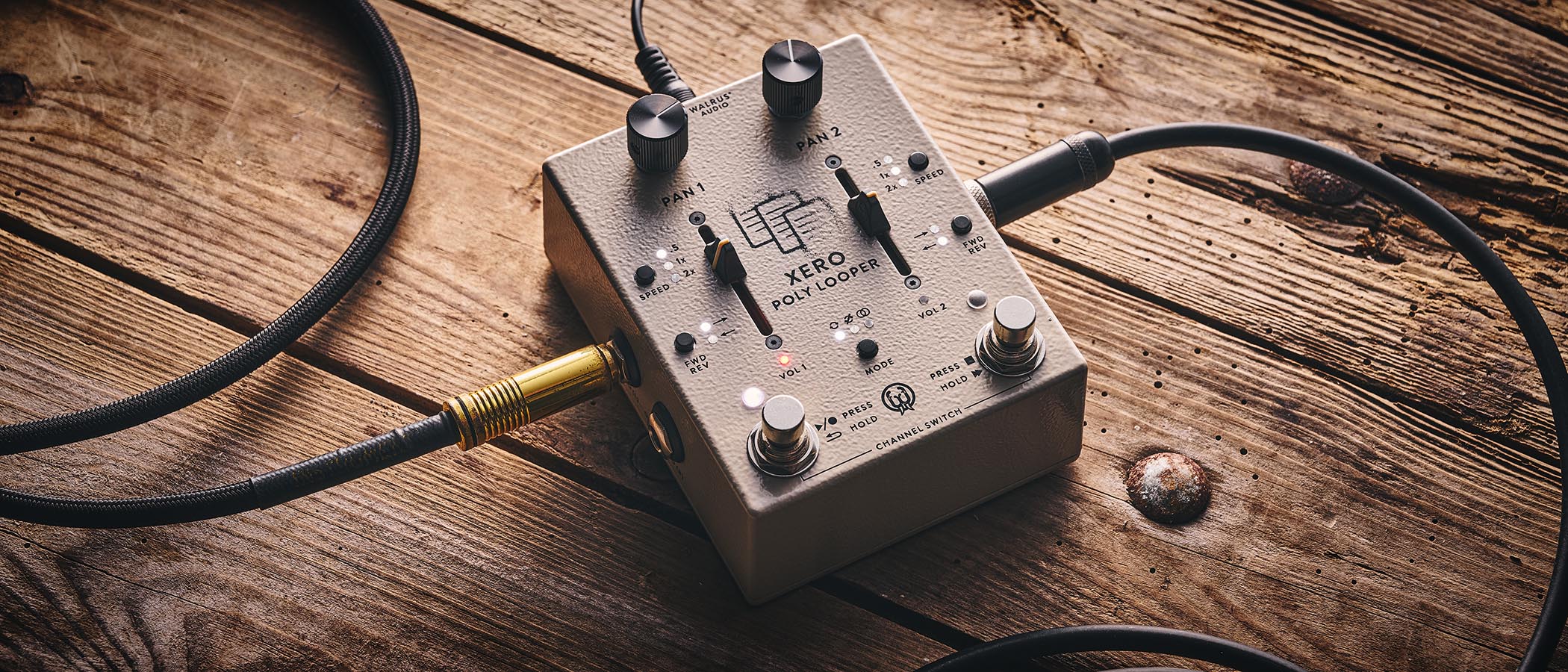“As soon as I saw it my heart jumped into my throat – I’d bought it from a trusted guy and I couldn’t imagine that he would have done something improper”: This 1960 Gibson ES-335 proves that there’s always something to learn from vintage guitars
Can you teach an old guitar new tricks? The jury's out on that. But an old guitar can teach you, just like when Dave Davidson picked up this vintage semi-hollow with a secret

“I recently acquired a 1960 Gibson ES-335 and discovered something interesting that I’ve never seen before. Even after all these years collecting and selling vintage guitars, I learned it’s always possible to teach an old dog new tricks.
“When I got the guitar everything appeared completely original besides one of the control knobs, which had a late-’60s-style deep reflector rather than the shallow style that is correct for the year. I wasn’t concerned because I knew I had some genuine vintage knobs, but when I pulled the knob off to replace it, I discovered the potentiometer shaft was nylon, rather than metal.
“As soon as I saw it my heart jumped into my throat because I’d bought it from a trusted guy and I couldn’t imagine that he would have done something improper. Then I pulled off the other knobs and found exactly the same thing.
“I started having a bit of a meltdown because I was kicking myself for not giving the guitar a thorough examination. I felt I should have known better and realised that the wiring harness must have been modified or replaced.
“My tech and I decided to pull out the harness and we discovered that nothing had ever been unsoldered or altered in any way. The potentiometers were odd looking, but the date codes indicated the 48th week of 1959. The manufacturer code was 235, which indicated the pots were made by Mallory, a company more closely associated with electrical components and batteries.
“I had never seen these before, but I was ready to bet my bottom dollar that they were original to the guitar. I started phoning around a few old timers, guys even older than me, to ask if they had ever seen potentiometers like this in a Gibson, but none of them had. Then I did a deep dive on the internet and after a few clicks I found a colleague of mine talking about a 1960 ES-335 that he found that had exactly the same pots.
“He had bought the guitar from its original owner in 2021 and it was quite intact. When he sent me some pictures I felt like I was looking at two identical guitars. Then we discovered the serial numbers were only two apart and both had FONs (factory order numbers) that corresponded to late 1960 and serial numbers that were very early 1961. With that slight discrepancy, you could call these guitars 1960s or 1961s.
All the latest guitar news, interviews, lessons, reviews, deals and more, direct to your inbox!
“So I learned something new. And later on, I talked to another friend who’d had a 1960 Les Paul Special with Mallory pots. My theory is that Gibson bought a load of these pots, probably from a local electronics store, and they used them when they couldn’t get stock from their usual supplier to keep the production line moving. The Mallory pots are totally silent in operation and really good quality.
“One of the pickups had an opened cover, but there’s no evidence of repairs having been carried out. That one is a ‘zebra’ and the other is a double black. Sometimes people take the covers off hoping to find double white bobbins, but all you really need to do is remove the bobbin screws and use a flashlight. It had the dot fretboard markers, and the non-wired bridge has brass saddles, rather than the later nylon ones.”

“It has the slim taper neck that’s typical for late 1960 and someone has refretted it at some point. It plays great and really rips if you plug it into a good tube amp. That’s why they’re called ‘’burst killers’. It has a lot of play wear and it’s not too heavy. Sonically, it’s big, like most of them are, because that hollow body with the solid plank in the middle adds a sympathetic tone that solid guitars don’t have.
“When I finally established that the guitar was correct, I felt humbled. It proved to me once again that however many vintage guitars you may encounter in life, one day you’re going to get a surprise that will knock you over. This one just got me and I had no clue. I went from thinking that I’d got a raw deal, but it worked out fine and I know that for me the knowledge I gained was ‘the deal’.
“People who have been in the vintage world for some time occasionally get a little bored because they think they’ve seen it all. It’s important to understand that there are always anomalies, and features that are not widely documented can sometimes turn out to be original after all.”
- Vintage guitar veteran David Davidson owns Well Strung Guitars in Farmingdale, New York.
- This article first appeared in Guitarist. Subscribe and save.
Huw started out in recording studios, working as a sound engineer and producer for David Bowie, Primal Scream, Ian Dury, Fad Gadget, My Bloody Valentine, Cardinal Black and many others. His book, Recording Guitar & Bass, was published in 2002 and a freelance career in journalism soon followed. He has written reviews, interviews, workshop and technical articles for Guitarist, Guitar Magazine, Guitar Player, Acoustic Magazine, Guitar Buyer and Music Tech. He has also contributed to several books, including The Tube Amp Book by Aspen Pittman. Huw builds and maintains guitars and amplifiers for clients, and specializes in vintage restoration. He provides consultancy services for equipment manufacturers and can, occasionally, be lured back into the studio.
You must confirm your public display name before commenting
Please logout and then login again, you will then be prompted to enter your display name.


